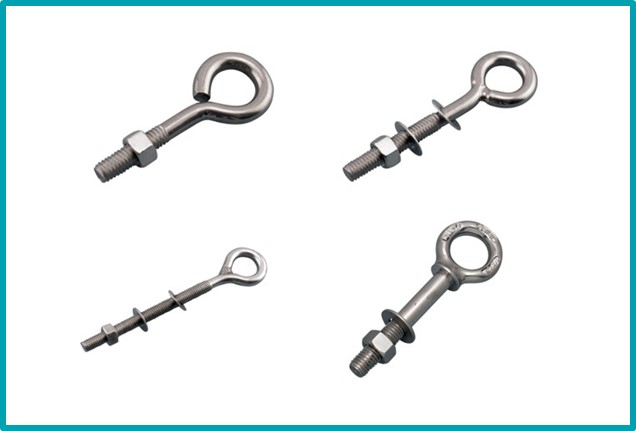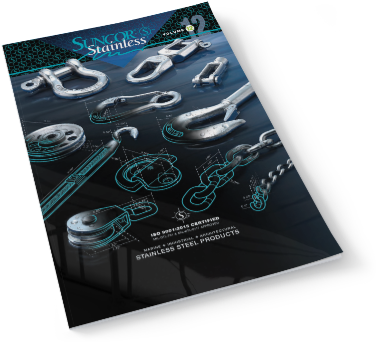The Importance Of Eye Bolts In The Rigging Industry
Eye Bolts are an essential piece of rigging and lifting hardware. They are used to secure anchor points in lifting and rigging applications. Eye Bolts can be used as a connection point for rigging, anchoring, pulling, pushing, or hosting applications. Eye Bolts can come in a variety of styles including welded, unwelded, ring, plain, and shoulder. In order to know which eye bolt is right for your application, it is important to understand the different types and how to use them in the safest way possible.

Forged Eye Bolts & Non-Forged Eye Bolts
There are various different types of eye bolts designed for specific applications. Forged eye bolts are hammered or pressed into form, which changes the grain structure of the metal to create a stronger, harder, and more durable product. This makes eye bolts more durable and performs well when lifting and rigging heavy-duty loads.
Non-forged eye bolts are made by bending the top unthreaded part of the bolt into the signature eye shape without creating an endless loop. These types of eye bolts come as welded or non-welded. They work for lighter-duty marine and industrial applications. They are not used in a situation with the possibility of heavy loads or angular pulling.
Shoulder Eye Bolts & Non-Shoulder Eye Bolts
Shoulder refers to the “skirt” where the eye and shank come together designed to resist bending. The shank refers to the threaded shaft that attaches to the eye. Shoulder Eye Bolts provide more versatility by reducing the tension forces on the shank and allowing for angular loading, as well as straight-line pulling. The shoulder design reduces bending stresses on the shank and allows the eye bolt to be used for angular lifting if the shoulder is properly seated in the load. If you are lifting with slings at any angle, you must use a shouldered eye bolt.
Non-shoulder Eye Bolts are designed without a shoulder, they can only be used for truly vertical or in-line lifts. Non-shouldered eye bolts are not designed for or intended to be used for any type of side loading or angular loading.
Stainless Steel Eye Bolts & Galvanized Eye Bolts
Eye bolts come in two types of materials: galvanized and stainless steel. The galvanization process adds a thin zinc coating to protect the metal material from corrosion and oxidization. Galvanized eye bolts can be used in industrial applications where moisture is not a primary concern.
Stainless steel eye bolts come in different grades of stainless steel with 316 and 304 being the two most common grades. Stainless steel eye bolts maintain corrosion resistance when they get scratched or dinged. Grade 304 is a common type of eye bolt used in automotive, construction, and agricultural applications. Grade 316 is considered “marine grade” which makes it perfect for marine applications and in environments with high moisture and high chloride levels. Stainless steel eye bolts are the perfect choice for rigging, tie-downs, and other demanding applications.
Safety is always priority number one when it comes to choosing your stainless steel hardware. Eye bolts are no exception as they are used in most rigging and lifting applications. At Suncor, we want you to have all the resources you need when picking out your next eye bolt. Check out our threaded products brochure to find types of grades, thread sizes, WLL, and more. You can also search our extensive line of stainless steel eye bolts in 228 different variations in our product gallery.
SUNCOR STAINLESS: THE LEADING MANUFACTURER OF STAINLESS STEEL HARDWARE AND COMPONENTS.
To learn more about the world’s most complete and highest quality sources for stainless steel hardware and custom parts – visit our Suncor Stainless website. This Plymouth, MA-based company offers a variety of the highest quality stainless steel hardware for industrial, marine, architectural, commercial, government, and OEM markets.
For more information on our stainless steel hardware and custom parts, you may contact Suncor Stainless at 1-800-394-2222 or by completing the Contact Us Form.
Sources:
https://www.uscargocontrol.com/blogs/blog/how-to-use-an-eye-bolt

Recent Comments